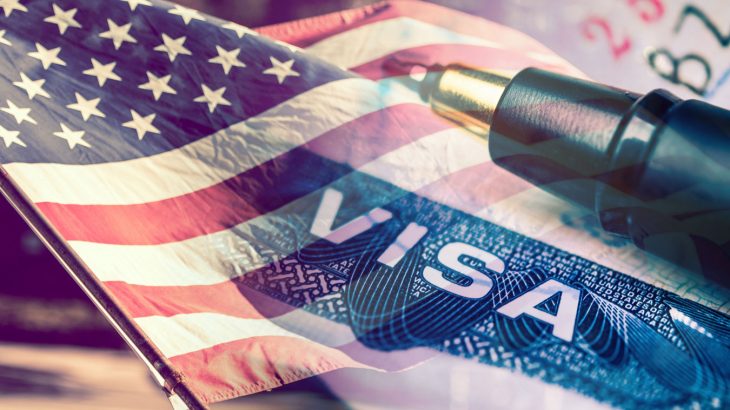The much-coveted green card is a license to permanently live and work in the United States. In other words, this piece of document grants the holder the status of permanent resident in the US and a path to citizenship.
The two most common ways to obtain a green card are through family and employment.
In general, green card immigrant visas through family-sponsored preference categories are limited to 226,000 per fiscal year (October 1 to September 30), and employment-based immigrant visas are capped at 140,000 annually. However, these annual limits can be exceeded if certain immigrant visas from prior fiscal year’s allocation remain unutilized.
This article provides a brief overview of the various routes through which a green card can be obtained.
- Through Family:
Immigration through family is arguably the most common path for obtaining a green card and later, citizenship. The marriage route is the quickset. The law allows a US citizen or a permanent resident to sponsor a family member for permanent residency (typically done by way of an I-130 filing).
The family-based route has two immigrant visa categories:
Immediate Relatives – these are close relatives of US citizens, such as spouses, unmarried children under 21, or parents. This category is not subject to a fiscal quota and unlimited number of visas are always available; thus visas are processed relatively much faster under this category.
Family Preference – this category is reserved for other relatives of US citizens and green card holders such as siblings, unmarried children over the age of 21, married children, etc., and a limited number of immigrant visas are available each year. Processing times in most cases often range from a couple to several years.
Separately, there’s also a path for fiancés of US citizens – K1 or the fiancé visa – which allows the fiancé to enter the US for the purpose of marriage and later, adjustment to green card status.
- Through Employment:
A green card can be obtained by working with a US employer; there are different categories, and of course, different requirements. These categories include priority workers such as outstanding professors and researchers, people with extraordinary ability and multinational manager and executives; professionals with advanced degrees; skilled workers and special immigrants.
The five categories of employment-based immigrant visas:
- EB-1: Priority Workers
- EB-2: Professionals with Advanced Degrees or Exceptional Ability
- EB-3: Skilled Workers, Professionals, and Unskilled Workers
- EB-4: Special Immigrants
- EB-5: Investors
Generally, the US employer will sponsor the green card petition. For example, qualified H-1B employees can obtain green cards if their employer applies for their labor certification and files the I-140 petition to sponsor them, mostly under the EB-2 or EB-3 classification. However, these particular categories have historically had long wait times. A quick path to green card is available to certain L-1 employees – a managerial or executive can be sponsored for a green card by their US employer under the EB-1 category; in this case the employer can directly file the I-140, bypassing the labor certification process. The wait times to obtain a green card under this route have been significantly shorter than those of the EB-2 or EB-3.
The two employment-based immigrant visa classifications which permit self-petitioning by foreign nationals are the EB-2 – National Interest Waiver, and EB-1- Extraordinary Ability. So, if you are a musician or an athlete who’s attained national or international fame may apply for an EB-1 visa without needing a US job offer. Similarly, a foreign national who can demonstrate that their work is of substantial intrinsic merit and national importance for the US can apply for an EB-2 visa without a US sponsor.
- Through Investment:
Foreign investors can avail he EB-5 visa – an immigrant visa which allows investors to obtain a green card by investing at least $800,000 in a commercial enterprise in a Targeted Employment Area (TEA) or $1,050,000 in a non-TEA. The investment must employ at least 10 full-time US workers or remain in a pool investment project which will directly result in job creation for US workers. Over the years, the EB-5 program has resulted in the infusion of billions of dollars into the US economy, boosting development projects and employment opportunities. There are 10,000 EB-5 visas available each fiscal year.
- Through Lottery:
Another way to obtain a green card is through the Diversity Visa Program or the Green Card Lottery. Under this program, 55,000 applicants are selected each year, mainly from countries with low immigration rates such as Estonia, Norway, Japan, Ukraine, etc. The applicant needs to have a high school education, or its equivalent, or two years of qualifying work experience.
5. Through Refugee/Asylee Status:
Applying for a green card by virtue of refugee or asylum status can be complex and time-consuming and requires meeting multiple criteria. One should have been granted refugee or asylee status in order to apply, meaning that the individual should have demonstrated the fulfilment of certain requirements of a refugee or asylum seeker and have been granted protection under US law. Refugees are generally people outside of their country who are unable or unwilling to return home because of fear of serious harm. Asylum status is a form of protection available to people who are refugees and are seeking admission to the US at a port of entry.
This article is for information purposes only and does not consitute legal advice of any kind.
This article has been written by Zeenat Phophalia, Esq. Of Counsel, Davies & Associates, India Office.
Zeenat Phophalia is qualified to practice law in New York, United Kingdom and India. She practices in the area of U.S. immigration law with a focus on business immigration, and has represented corporate clients including large and medium sized companies and startups across sectors such as IT, consulting, consumer goods, manufacturing and telecommunications.
Looking for an US immigration lawyer? Request free consultation at Davies & Associates or find our closest location around the world.





























